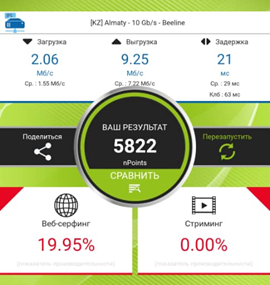The initial monitoring of the school connectivity demonstrated lack of the promised speed by Internet Service Provider. The internal wired and wireless infrastructure were the other issue of low connectivity leaving teachers and schools an opportunity to benefit from Internet provided by authorities.
Methodology
To assess the technical condition of the Internet infrastructure of 10 pilot schools in the Osh and Batken regions of the Kyrgyz Republic, the following activities were carried out:
- Video interviews with school principals and IT teachers were conducted in Kyrgyz to identify current challenges and needs of educational institutions.
- Remote diagnostics of the condition of equipment, communication lines and current Internet connection speed.
- Analysis of building plans to study the location of classes, network nod locations and used network equipment.
- Collection of data on internet service providers and tariff plans, as well as technical network parameters.
Based on our previous research we learned that all networking and information technology issues delegated as additional responsibility to teachers of the informatics, computer science classes. Therefore, the teachers were important source of information providing preliminary insights about the state of connectivity.
The remote diagnostics had been conducting using video call and overview of the cabling to the schools, media converters, routers and switches as well as end devices such as computers, laptops, etc.
We have used different testing platforms to monitor school connectivity including such parameters as speed diagnostics, browsing, Quality of Service, latency rate to key data centers and internet exchange points, as well as compliance of existing infra to LAN cabling engineering standards. Some parameters were tested using such diagnostics services as Ookla Speedtest, fast.com focused on quality of streaming services, and nPerf that rely upon the mLab measurement protocol (NDT7). Note that the GIGA Daily Check Up App was not available to Kyrgyzstan therefore ignored in testing stage.
The buliding information modeling helped us to understand the quality of wireless signal, possibility of wireless mesh network across the school, existing capacity, needs and challenges for schools to be fully connected and enjoy the seamless digital education experience.
Findings
- All of the secondary schools had low-bandwidth capacity routers from two vendors with a maximum speed of up to 300 Mbps, limited processor performance and memory capacity suitable for home or small office usage only. The routers haven’t been able to cope with all connections.
- Pilot schools were utilizing combined internal connectivity infrastructure – LAN cable connecting computer classrooms and wifi connection for teachers. The actual internet speed ranged between 340Kbps to 16Mbps.
- Based on the Cabinet of Ministry’s decision KyrgyzTelecom Joint Stock Company had been selected as the single supplier of the internet services for all 2200 secondary schools of Kyrgyzstan. The terms of the agreement were classified and not available publicly. According to the interview, the Ministry of Education paid roughly 2500 Kyrgyz soms monthly fee per school in duration from September to June, while summertime were unpaid.


